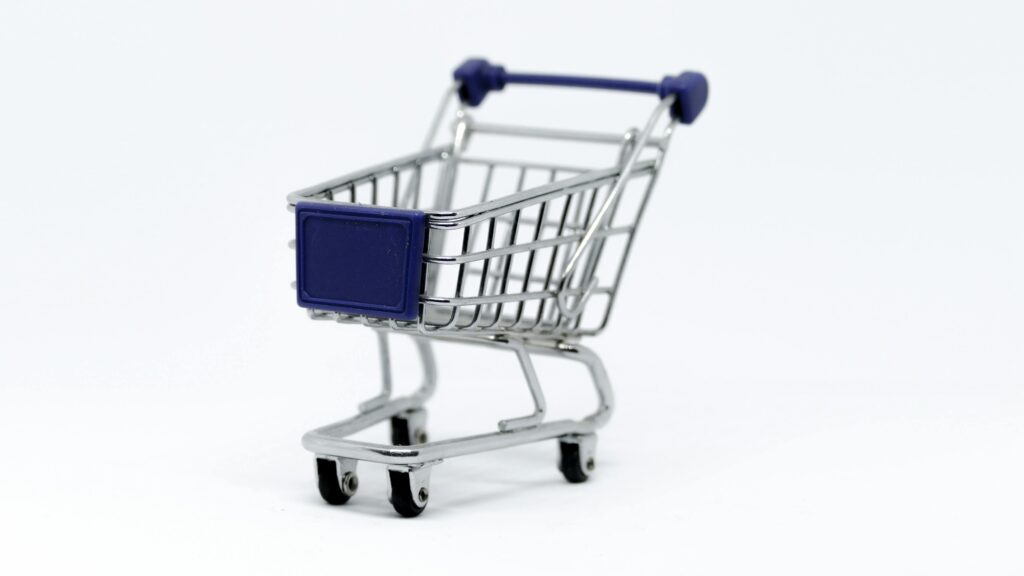What Is Dropshipping and How It Works?
Dropshipping is a retail fulfillment method where a storefront sells products without stocking them. Upon sale, the supplier handles packing and shipping. The merchant profits from the price differential, minus the cost of goods and fees.
Here’s how it typically works:
- You create an online store and list products from your supplier.
- A customer places an order and pays for the product.
- You forward the order and customer details to your supplier.
- The supplier ships the product directly to the customer.
The Appeal of Passive Income Through Dropshipping
The idea of earning while you sleep or focus on other things is certainly appealing! However, it’s essential to note that some effort is still required to set up and maintain a successful dropshipping business.
The appeal of passive income lies in its potential to generate revenue with minimal ongoing effort. Here’s how:
- Automated processes: Many tasks, such as payment processes and shipping, are handled by suppliers or automated systems.
- Low maintenance: without holding inventory, you don’t have to worry about storage, inventory management, or product handling.
- Flexibility: Dropshipping allows you to run your business from anywhere, at any time, as long as you have a reliable internet connection.
- Scalability: With dropshipping, you can scale your business more easily, as you don’t have to worry about inventory storage or management.
Trends Shaping Dropshipping in 2025

Here are the top trends shaping dropshipping in 2025:
- Artificial Intelligence (AI) and Automation*: AI is transforming dropshipping by automating tasks, predicting product demand, and optimizing pricing. This technology is expected to reach $244 billion by 2025, revolutionizing the industry.
- Sustainability and Eco-Friendliness*: Consumers are prioritizing environmentally friendly products, packaging, and shipping. Dropshippers are adapting by offering eco-friendly products, carbon-neutral shipping, and recyclable packaging.
- Social Commerce and Influencer Marketing*: Social media platforms like TikTok, Instagram, and Facebook are driving sales through in-app shopping, live shopping, and influencer collaborations.
- Personalization: AI-driven product recommendations, customized shopping experiences, and personalized marketing are becoming essential for dropshipping success.
- Fast and Reliable Fulfillment: With growing expectations for quick delivery, dropshippers are investing in local warehousing, real-time tracking, and automation to improve shipping efficiency.
Niche Trends:
- Pet Supplies: Pet owners are willing to spend on premium products, making pet supplies a thriving niche.
- Eco-Friendly Products: Consumers prioritize sustainable products, driving demand for eco-friendly goods.
- Health and Personal Care: This niche is growing rapidly, with consumers seeking health-related products and wellness solutions.
- Gaming Accessories: The gaming industry continues to boom, driving demand for gaming accessories and gear.
- Home Decor and Office Supplies: With the rise of remote work, home office supplies and decor are becoming increasingly popular ¹ ² ³.
Technological Trends:
- Virtual Reality (VR) and Augmented Reality (AR): These technologies are enhancing customer experiences, allowing shoppers to interact with products virtually.
- Blockchain Technology: Blockchain is increasing transparency in transactions, ensuring fair dealings between suppliers and sellers.
- AI-Powered Chatbots: Chatbots are transforming customer support, providing 24/7 instant support and personalized recommendations ² ³.
Choosing a Profitable Niche with Longevity
Select a niche with enduring demand—rather than fleeting fads. Health and wellness, home automation gadgets, sustainable lifestyle accessories, and specialized hobbies offer resurgent potential, provided you analyze trends and competition.
Validating Product Demand Quickly

Validating product demand is a crucial step in dropshipping. It helps you determine whether a product is likely to sell well and generate revenue. Here’s how to validate product demand quickly:
Methods for Validating Product Demand:
- Google Trends: Use Google Trends to analyze search volume and trends for your product. This helps you understand whether there’s a growing interest in the product.
- Social Media: Look at social media platforms like Facebook, Instagram, and Twitter to see if people are talking about the product. You can use hashtags to gauge interest and engagement.
- Amazon Best Sellers: Check Amazon’s best-seller lists to see if similar products are selling well. This can give you an idea of product demand and popularity.
- Online Forums: Join online forums and communities related to your niche to see if people are discussing the product or expressing interest in it.
- Paid Advertising: Run a small paid advertising campaign on platforms like Facebook or Google Ads to test product demand. This can help you gauge interest and generate sales data quickly.
Tools for Validating Product Demand:
- SaleHoo: A directory of verified suppliers that can help you find products with demand.
- Jungle Scout: A tool for finding profitable products on Amazon and estimating demand.
- Google Keyword Planner: A tool for analyzing search volume and trends for specific keywords.
Tips for Validating Product Demand:
- Start small: Validate product demand with a small test campaign or a limited product launch.
- Be patient: Validating product demand takes time, so be patient and gather data before making decisions.
- Analyze competition: Research your competition and understand their strategies and product offerings.
By validating product demand quickly, you can reduce the risk of launching a product that may not sell well and increase your chances of success in the dropshipping business
Evaluating Suppliers for Reliability and Profit Margins
Choose suppliers on platforms such as AliExpress, Oberlo, or Spocket who maintain excellent ratings, expedited shipping, and transparent return policies. Ensure product margins of 30–50% after factoring in shipping and marketing costs
Building Your E‑Commerce Platform

Use user‑friendly platforms like Shopify for rapid deployment or WooCommerce for greater customization. Ensure mobile responsiveness, fast loading times, and secure checkout flows for a frictionless user experience.
FAQs
General Questions
1. What is dropshipping?
Dropshipping is a retail fulfillment method where you sell products without holding any inventory. A supplier ships products directly to your customers.
2. What is passive income in dropshipping?
Passive income in dropshipping refers to earning revenue with minimal ongoing effort, leveraging automated systems and supplier partnerships.
Getting Started
1. How do I start a dropshipping business?
To start a dropshipping business, research a niche, find reliable suppliers, set up an online store, and create a marketing strategy.
2. What are the initial costs for starting a dropshipping business?
Initial costs may include website setup, marketing, and initial product costs. These can vary depending on your niche and approach.
Success and Optimization
1. How can I ensure success in dropshipping?
Success in dropshipping requires careful supplier selection, effective marketing, and ongoing optimization of your store and processes.
2. How do I optimize my dropshipping store for better sales?
Optimize your store by improving user experience, leveraging data analytics, and refining your marketing strategy.
Passive Income and Scaling
1. How can I automate my dropshipping business?
Automate tasks like order fulfillment, customer support, and marketing using tools and software.
2. How can I scale my dropshipping business?
Scale your business by expanding your product line, investing in marketing, and optimizing logistics and supplier relationships.
Challenges and Solutions
1. What are common challenges in dropshipping?
Common challenges include supplier reliability, customer service, and marketing effectiveness.
2. How can I overcome dropshipping challenges?
Overcome challenges by researching and selecting reliable suppliers, investing in customer support, and continuously optimizing your marketing strategy.




